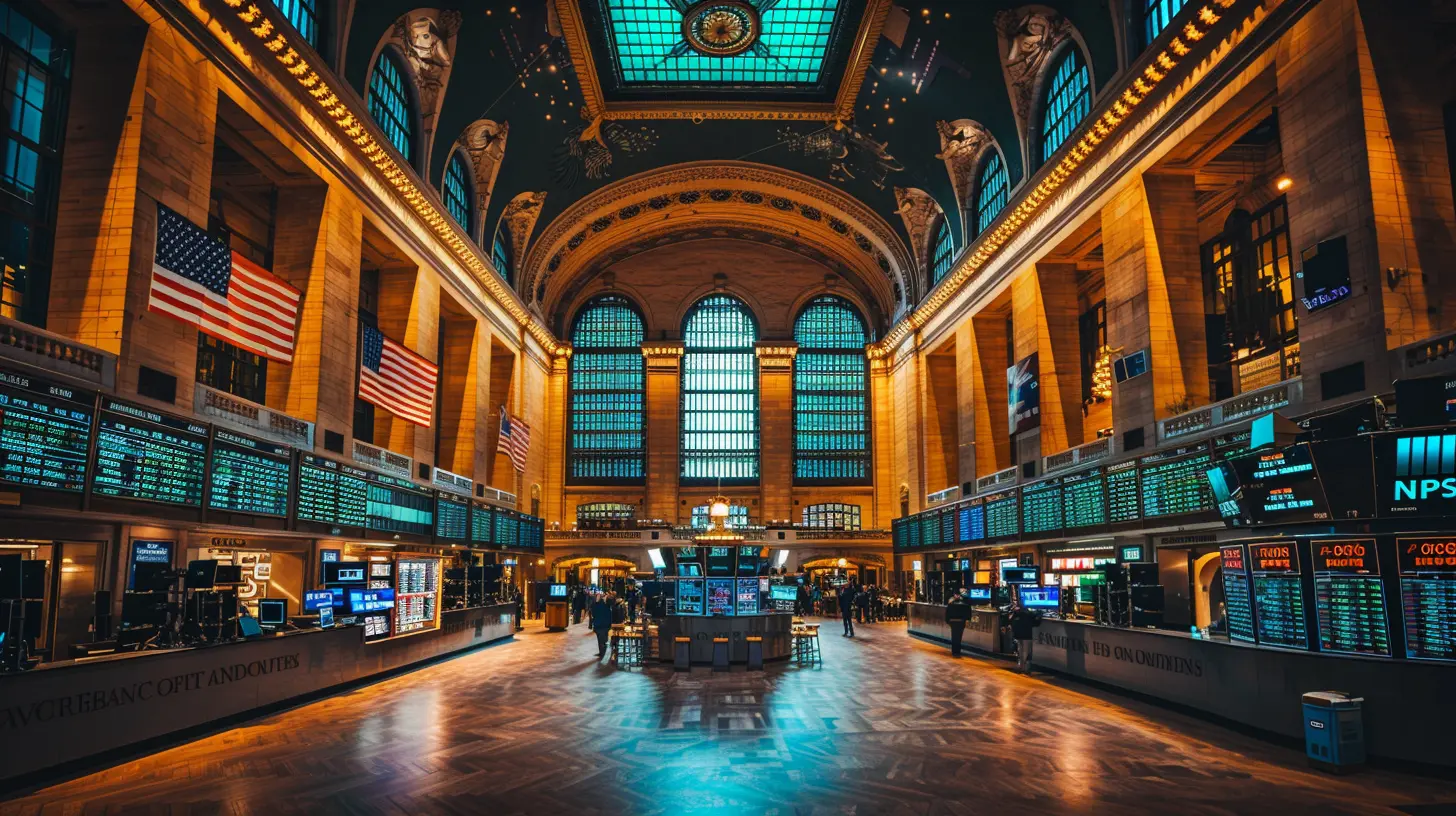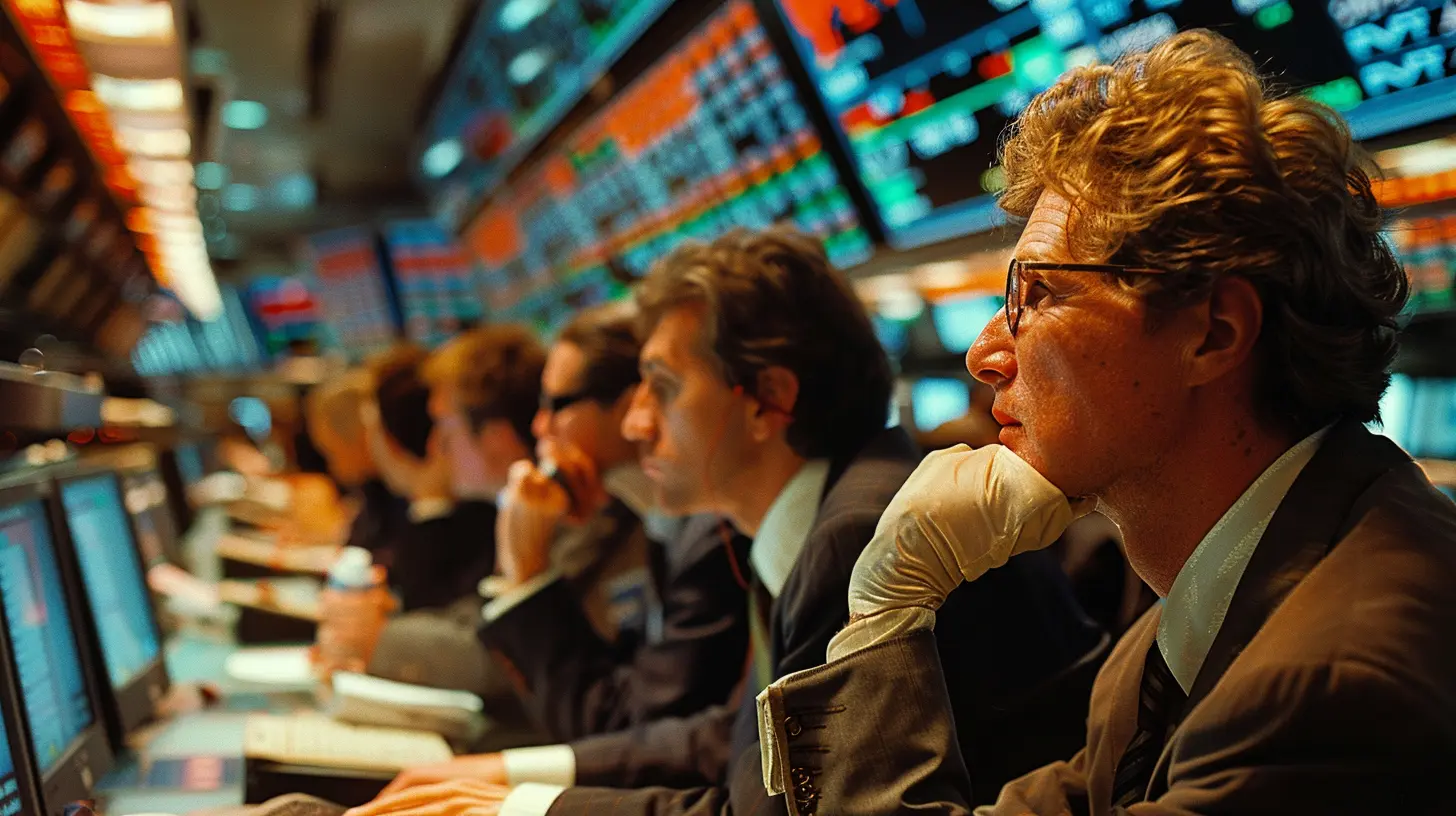Institutional Roadshows: The Behind-the-Scenes of IPO Promotion
26 November 2025
Alright folks, buckle up — we’re pulling back the velvet curtain and slipping backstage into one of the most mysterious, high-stakes spectacles in the finance world: institutional roadshows. Sound like a rock tour? Kind of is — minus the electric guitars and groupies, plus a whole lot of spreadsheets, suits, and free hotel pens.
If you've ever wondered how a company goes from being privately owned to ringing the bell on Wall Street, well, there's a whole dog-and-pony show involved. And the roadshow is the sizzle reel — the grand pitch, the champagne-filled elevator speech that turns big money heads.
Let’s break it all down (while keeping it fun), because believe it or not, IPOs aren’t just about shiny stock tickers and ticker tape confetti.
What Exactly Is an Institutional Roadshow?
Imagine you’re a startup CEO. You’ve built this killer company, and now... you’re ready for the big leagues. Time to go public! But before you get listed on Nasdaq or the NYSE, you've got to prove to the big fish (institutional investors) that your company’s worth their fat checks.Enter the institutional roadshow — a whirlwind tour where company execs, usually the CEO and CFO, hit the road (or — these days — hop on Zoom) and pitch the business to mutual funds, hedge funds, banks, and mega-wealth managers. Think Shark Tank — but with suits, not hoodies, and the sharks are managing billions.
Roadshows: The PowerPoint Parade from Wall Street to Who-Knows-Where
These aren’t casual meet-and-greet lunches — they’re intense, precisely coordinated presentations. A roadshow can involve jetting across major cities like New York, London, San Francisco, and Boston — all in a matter of days. It’s a numbers-packed, pitch-perfect, investor-dazzling marathon.We're talking:
- Slideshow decks on steroids
- Market opportunity stats out the wazoo
- Hockey-stick revenue graphs (because no one ever shows a graph going down, right?)
- And a whole lotta confidence
The goal? Convince big investors to hop on your IPO and buy your stock at issuance.
Who’s in the Spotlight?
Let’s break down who’s doing what here.- The Company Execs: These are your headliners. The CEO is the hype man, delivering the story. The CFO (aka the numbers whisperer) handles the nitty-gritty financials.
- The Investment Bankers: They’re the event organizers. Think of them as the tour managers arranging the schedule, the venues (read: boardrooms), and setting prices for tickets (stock shares).
- The Institutional Investors: These are the VIP guests with all the money. They don't want free t-shirts — they want returns.
But Why Do Roadshows Even Matter?
You’d think investors would just read a company’s S-1 filing and say, “Cool, I’m in!” Nope. Institutional investors are like gourmet chefs — they don’t just want the ingredients, they want the full-on taste test.Roadshows give them a chance to:
- Ask unfiltered questions
- Evaluate leadership vibes
- Spot red flags before they invest millions (or billions)
It’s a trust-building opera. No one wants to throw money at a company unless they're sure it's not the next WeWork debacle.
IPO Valuation: The Roadshow's Not-So-Secret Mission
Let’s get real — one of the sneakiest purposes of a roadshow is price discovery. That’s fancy finance speak for “How much should this stock actually cost?”During the roadshow, investment banks gather feedback from investors about how much they’d be willing to pay per share — it’s called the "book-building" process. Based on this data, the final IPO price is set.
Imagine if Airbnb asked you, “Would you pay $50 or $70 a share?” Your answer helps them decide on the opening price. Multiply that by dozens of investors, and voilà — you’ve got the IPO price tag.
Spoiler: It's part art, part science, and part Jedi mind trick.
Wait… Are Roadshows Always in Person?
Great question, my friend. Once upon a time, roadshows meant endless flights, rubber chicken lunches, and long taxi rides through financial districts.Fast forward to the 2020s, and guess what? Virtual roadshows are now a thing. Thank the pandemic for making CEOs pitch in their pajamas (well, at least from the waist down).
Virtual roadshows save money, time, and energy — but some say they lack the sparkle of an in-person touch. Investors can’t size up the “aura” of a leadership team quite the same way through a screen. It’s kind of like online dating — you can swipe right all you want, but sometimes you’ve gotta meet in real life.
What Really Happens During a Roadshow Meeting?
Let’s paint the picture: you’re an institutional investor. You sit down with your $6 coffee, and in walks a company’s exec team looking sharper than a PowerPoint pie chart. What happens next?Here's the typical rundown:
1. Introduction – Investment banker gives the elevator pitch.
2. Company Presentation – CEO and CFO perform their info-packed duet.
3. Q&A – Investors go hard. Everything from growth strategy to accounting practices.
4. Feedback Time – Quietly, behind closed doors, investors give their interest levels.
It’s short but sweet — usually 30 to 45 minutes of adrenaline-pumping persuasion.
The "Hype Machine" in Full Effect
You didn’t think those headlines like “This IPO Could Be the Next Unicorn!” just magically appear, did you?Nope — public relations, marketing, and finance teams work overtime during roadshows to generate buzz. Think press releases, media appearances, interviews, and lots of subtle “leaks” to financial news outlets. They’re not just pitching investors — they’re selling the dream to the world.
It’s the ultimate mix of FOMO (fear of missing out) and YOLO (you only live once). Gotta get in before it pops, right?
When Roadshows Go... Off-Road
Not every roadshow ends in a stock market success story. Some flops include:- Overpromising: Talking a big game and then tripping on day one. (Hello, Blue Apron.)
- Icicle-Cold Interest: If investors aren't buying what you're selling, the IPO might get delayed or canceled.
- Valuation Troubles: Getting greedy with your pricing can backfire.
The roadshow is a delicate dance — you want confidence, not cockiness. There’s a fine line between “We’re going to the moon!” and “We might crash before takeoff.”
The Cool (and Slightly Weird) Stuff No One Talks About
Alright, now let's spill some tea. A few quirky tidbits from behind the scenes of roadshows:- Some execs bring lucky charms — yes, even billionaire CEOs are a little superstitious.
- Investment banks sometimes score hotel suites with tubs bigger than the entire boardroom.
- On tight schedules, roadshow teams might squeeze in eight meetings a day — that’s more small talk than a holiday dinner with extended family.
And the food? Luxe and legendary. Apparently, some bigwigs judge a bank by the quality of its catering. You can't sell a billion-dollar IPO on stale bagels.
So... Do Roadshows Actually Work?
Short answer: Heck yes. They’re one of the most important steps in determining if a company’s IPO will soar like a SpaceX rocket or belly flop like a failed pancake flip.These meetings shape perception, pump demand, and help set the crucial IPO price. They're also a chance for companies to start a long-term relationship with investors — not just a one-night stand with Wall Street.
Think of them as first dates before a financial marriage. You gotta make a good impression.
Let’s Wrap It Up
Institutional roadshows might sound boring at first glance, but they’re the backstage pass to an IPO concert that shapes the financial future of a company. They're part performance, part negotiation, part high-stakes poker table.So next time you see a company go public and their stock shoots up 40% on day one, just remember — there were weeks of caffeinated pitches, endless investor meetups, and probably one tired CFO who just wanted a nap, that led to that moment.
If IPOs are the blockbuster premieres of the finance world, roadshows are the rehearsals, the press junkets, and the whisper campaigns that build the buzz. And while you won’t find them on Netflix, they’re absolutely worthy of a behind-the-scenes documentary.
all images in this post were generated using AI tools
Category:
Ipo InsightsAuthor:

Zavier Larsen

